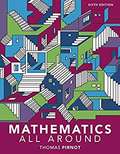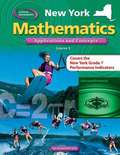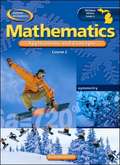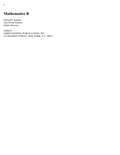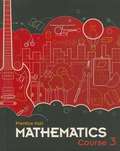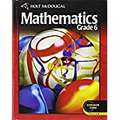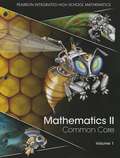- Table View
- List View
Mathematics A
by Isidore Dressler Edward P. KeenanThis text has been written to provide effective teaching materials for a unified program appropriate for ninth- and tenth-grade mathematics students, including all topics contained in the Core Curriculum.
Mathematics All Around
by Tom PirnotGiven their widely varying backgrounds, students in Liberal Arts Math often enter the course with math anxiety. Pirnot’s Mathematics All Around, 6th Edition offers the supportive and patient writing style that students need to overcome that apprehension, developing useful skills through realistic applications that can be seen in the world around them. Relevant and approachable, the author’s tone resembles the support students would receive during an instructor’s office hours. The author emphasizes a problem-solving approach, reinforcing problem-solving methods and how to apply them throughout the text. The 6th Edition keeps students engaged with updated real-world applications, while also providing more support as they learn with new measurable objectives, revised exercise sets, significant enhancements to each chapter, as well as a new student Workbook.
Mathematics Application and Concepts: Course 3 (New York Edition)
by McGraw-HillYour textbook also gives you many opportunities to master the Mathematics Performance Indicators. Take time each day to do at least one sample problem either from the Countdown or from the lesson you are studying.
Mathematics Applications and Concepts: Course 2 (Michigan Edition)
by Roger Day Patricia Frey Rhonda Bailey Arthur C. Howard Kay Mcclain Deborah HutchensThe book helps students prepare for the MEAP test in a structured manner with the grading system included.
Mathematics Course 3
by Randall I. CharlesChapters 1-3 focus on integers, rational numbers and real numbers in order to set the stage for equations, inequalities and functions. Real-World applications to the more abstract algebraic concepts are found throughout the text. More than 5 Activity Labs per chapter ensure students receive the visual and special instruction necessary to conceptualize these abstract concepts and prepare them for advanced math courses.
Mathematics Course 3 (Pennsylvania Edition)
by Randall I. Charles Mark Illingworth Bonnie Mcnemar Darwin Mills Alma Ramirez Andy Reeves Denisse R. ThompsonFrom the authors: We have designed this unique mathematics program with you in mind. We hope that Prentice Hall Mathematics will help you make sense of the mathematics you learn. We want to enable you to tap into the power of mathematics.
Mathematics Formulas (Fourth Edition)
by Ron Larson Bruce Edwards Ignacio Bello Anton Kaul Jack BrittonThe value of r is between -1 (a perfect negative correlation) and +1 (a perfect positive correlation). When r is close or near 0, there is no linear correlation, Nota: The numerator for r is the same as that for m in equation (3), The denominator is also very similar to that for m.
Mathematics I, Common Core, Volume 1
by Randall I. Charles Allan E. Bellman Sadie Chavis Bragg Basia Hall Dan Kennedy Grant Wiggins William G. Handlin Art Johnson Laurie E. Bass Stuart J. MurphyNIMAC-sourced textbook
Mathematics I, Common Core, Volume 2
by Randall I. Charles Allan E. Bellman Sadie Chavis Bragg Basia Hall Dan Kennedy Grant Wiggins William G. Handlin Art Johnson Laurie E. Bass Stuart J. MurphyNIMAC-sourced textbook
Mathematics II, Common Core, Volume 1
by Randall I. Charles Allan E. Bellman Sadie Chavis Bragg Basia Hall Dan Kennedy Grant Wiggins William G. Handlin Art Johnson Laurie E. Bass Stuart J. MurphyNIMAC-sourced textbook

